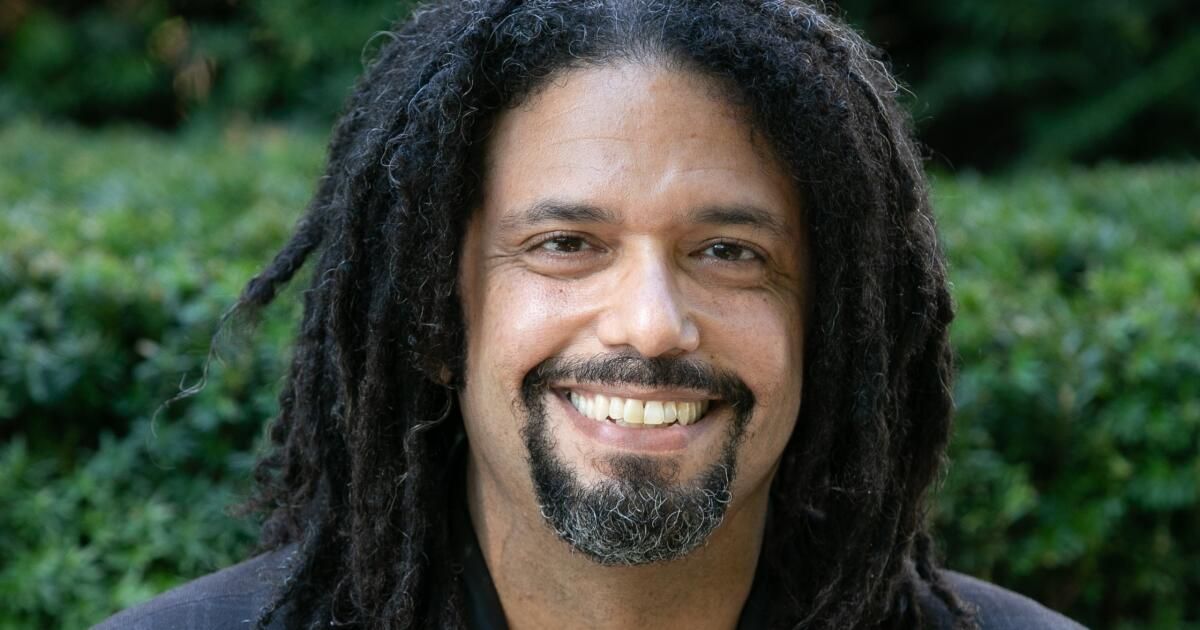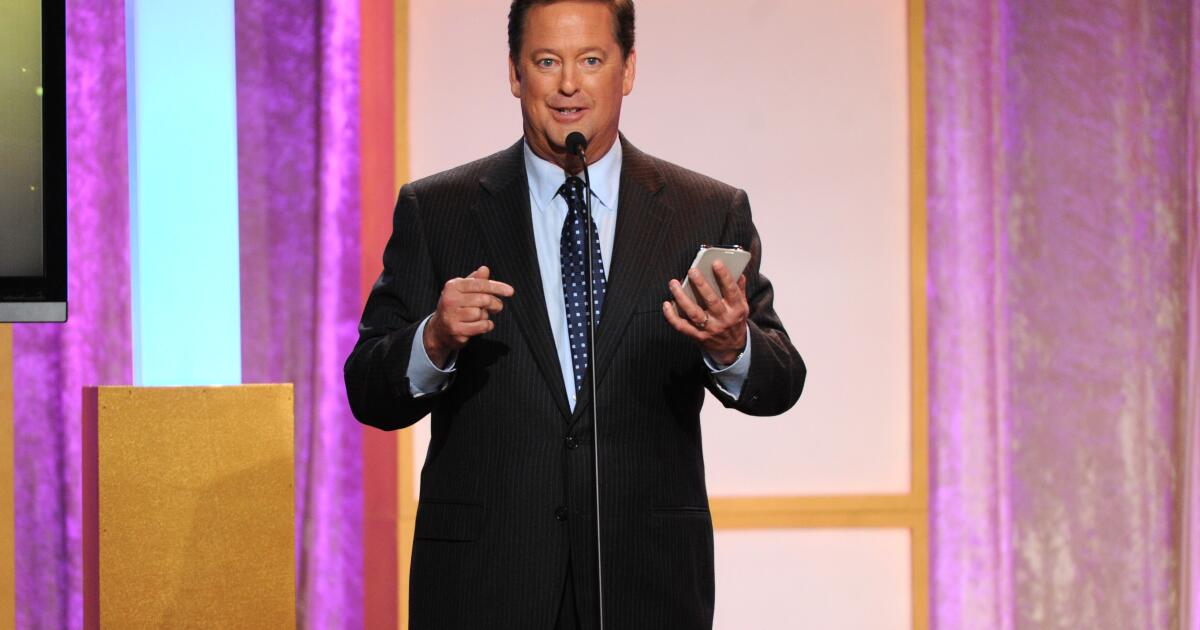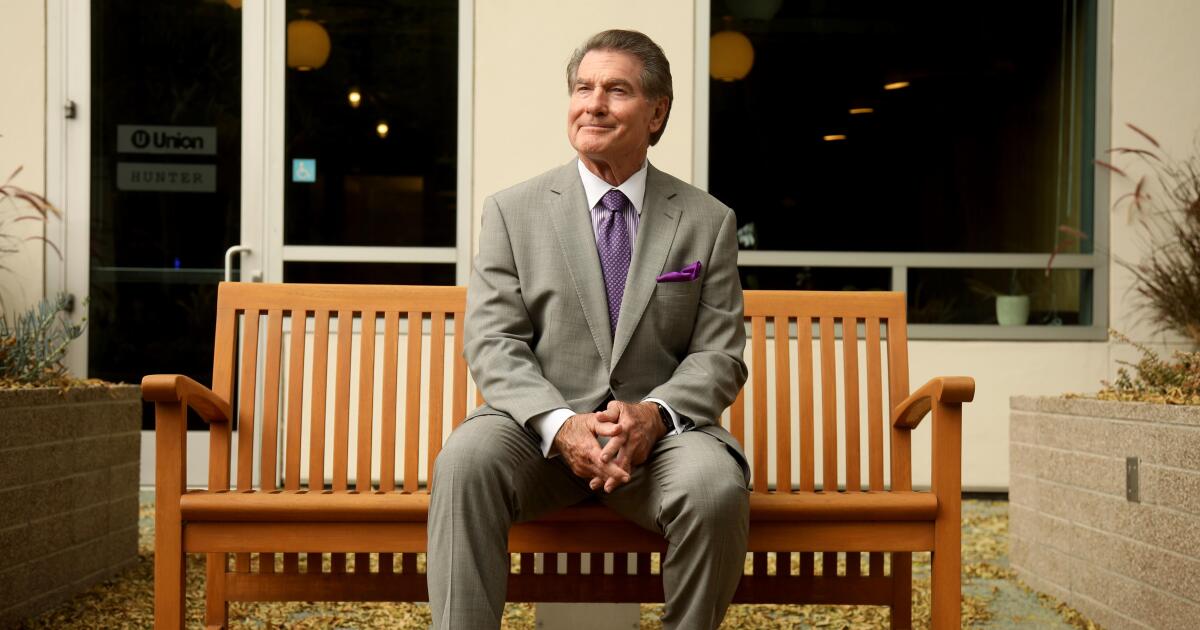Book review
The Stadium: An American Story of Politics, Protest, and Play
By Frank Andre Guridy
Basic Books: 368 pages, $32
If you purchase books linked on our site, The Times may earn a commission from Bookshop.org, whose fees support independent bookstores.
We typically enter stadiums to watch football or baseball, or to see a big concert, or perhaps to cheer on our favorite political candidate. These activities are not likely to lead us directly to serious reflection on how and for whom public spaces are used, or how these spaces reflect the strengths and weaknesses of American democracy. But after reading Frank Andre Guridy’s “The Stadium,” you might find yourself thinking as much about the history of these cavernous facilities as you do about the games played on the field.
Subtitled “An American History of Politics, Protest and Play,” Guridy’s deeply researched book offers just that: a forward-thinking study of inclusion and exclusion, the relationship of high-profile buildings to their neighborhoods, and the ways in which stadiums and arenas have succeeded and the ways in which they have failed to live up to the country’s ideals.
It’s also a defense of mid-century concrete stadiums (think Cincinnati’s Riverfront Stadium or San Francisco’s Candlestick Park), which Guridy argues fostered a democratic spirit despite their typically suburban locations. By contrast, it offers a critique of quaint, jewel-box facilities (pioneered by Baltimore’s Camden Yards) that tend to cater to affluence and gentrification despite their centralized urban locations.
Guridy, a professor of history and African-American studies at Columbia University, has set himself a daunting task that could be fraught with danger. Such a book could lean too heavily toward the study of buildings, which would appeal to architecturally inclined readers but perhaps not to the general public. He could also turn the project into a work of sports history — after all, games are what most people think of when they hear the word “stadium.” The book contains elements of both subjects, but Guridy is looking for something bigger than both.
“The Stadium” is a work of social history about the interaction of people, places and ideas, legal and de facto segregation, mixing and isolation, money and power. It is a series of vivid scenes that add up to a big picture.
One such scene is playing out in the heart of Los Angeles. The publicly run Los Angeles Memorial Coliseum opened in 1923 (one of many stadiums designed as memorials to World War I veterans), built to attract the Olympics to Los Angeles (which it did in 1932). By the 1970s it had long been racially integrated, unlike, say, Tulane Stadium in New Orleans, where for many years visiting football teams had to bench their black players. (In 1956, as Guridy writes of Louisiana, “the state legislature banned interracial mixing at sporting events and virtually all social functions.”)
But at the Coliseum, progress was not measured solely on the playing field. In 1972, seven years after the Watts uprising, the stadium hosted the first Wattstax concert, a benefit showcase of Stax artists including Isaac Hayes, the Staples Singers, and many others. As Guridy writes, “The audience of 100,000 was the largest crowd of black people at a public event in the United States since the March on Washington in 1963.” At the time, the stadium was the site of social change and cultural celebration.
Other topics explored here include the 1982 Gay Games held at San Francisco’s Kezar Stadium (the U.S. Olympic Committee played hardball legally to ensure that the organizers of the Gay Games couldn’t officially use the word “Olympics”); the history of Robert F. Kennedy Memorial Stadium in Washington, D.C., essentially a national monument where degrading stereotypes of Native Americans were regularly played out as entertainment for Redskins fans; and the battle to allow female journalists into the stadium’s locker rooms and press boxes, led in large part by Melissa Ludtke, who in 1978 was a plaintiff in the federal lawsuit that finally won female sportswriters equal access to Major League Baseball locker rooms. (Ludtke has written an excellent new book, “Locker Room Talk,” that chronicles this fight in detail.)
At its core, “The Stadium” is a story of access and representation in the most public and crowded of places, where community rituals and often patriotism play out for all to see. Like many sports fans, Guridy takes a critical look at the value now placed on luxury seating, which shuts many fans out of the competition, and the preponderance of flashy corporate sponsorship, which now makes stadiums look like marketplaces with billboards where a game is taking place.
At times, Guridy loses sight of the forest and focuses on the trees when he zeroes in on an episode that proves a particular point he wants to make. But when he does veer off into a specific event, making one wonder where we might be going, he usually manages to get back on the main path.
“The Stadium” maintains a vision of the stadium as an idea and as an ideal. In this book, the stadium is us, in a broad sense, for better or worse. It is where we live out our national dreams and, sometimes, our fantasies.
Chris Vognar is a freelance cultural writer.












